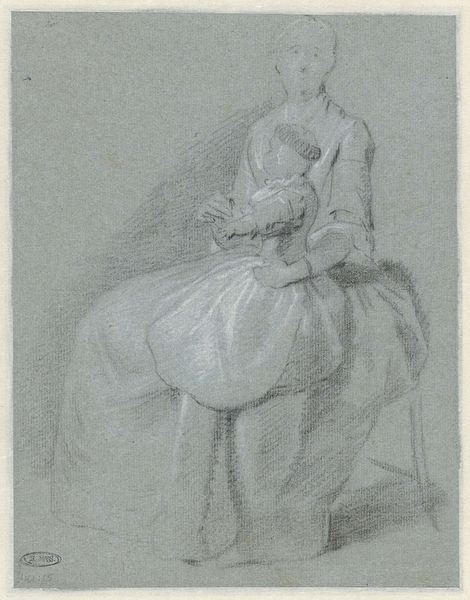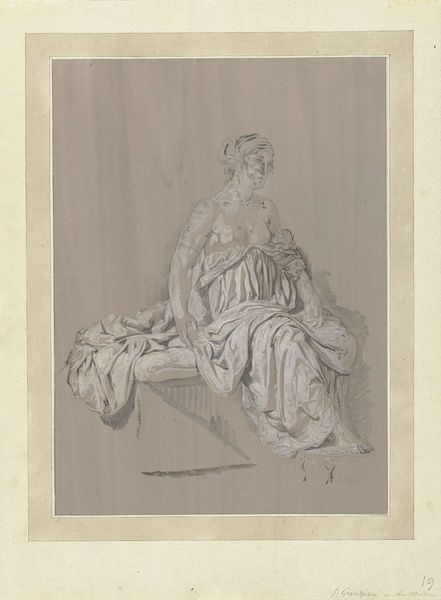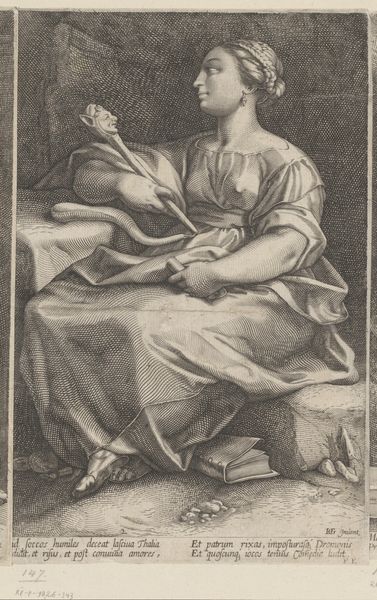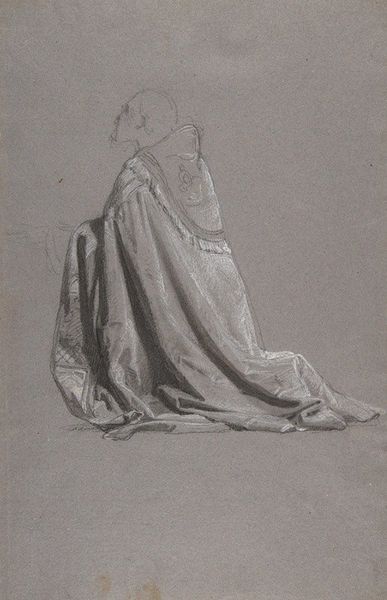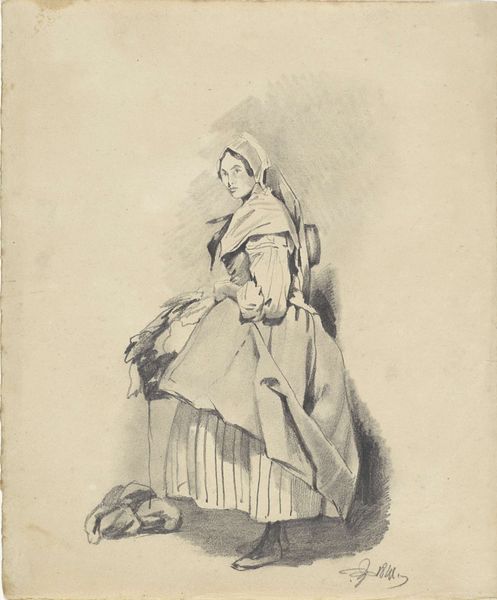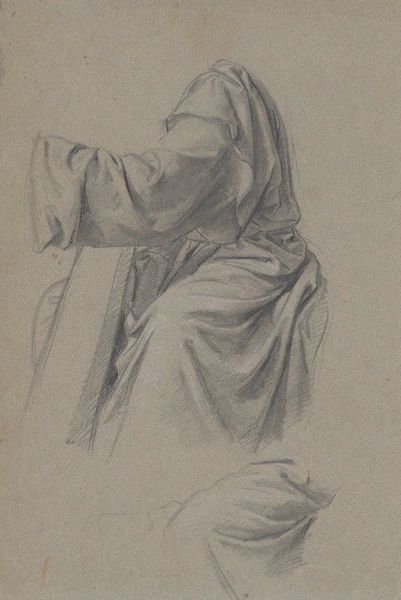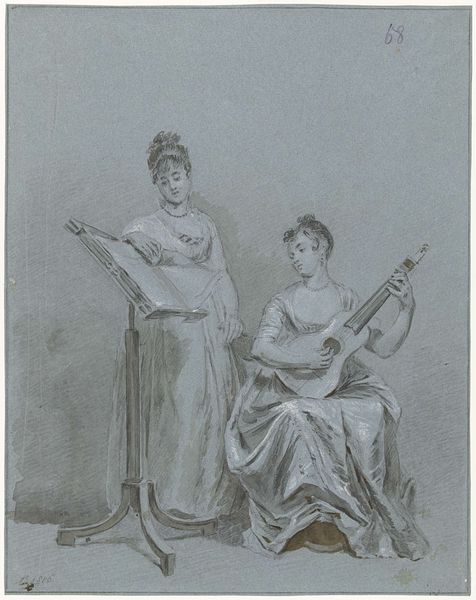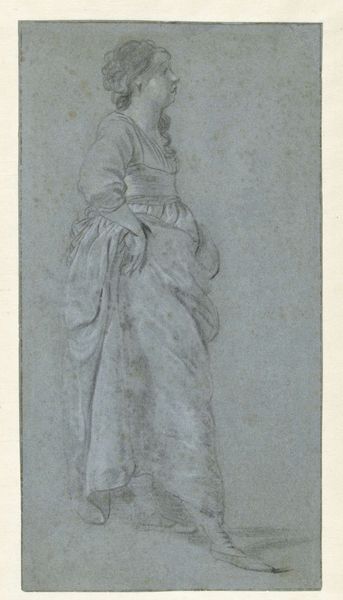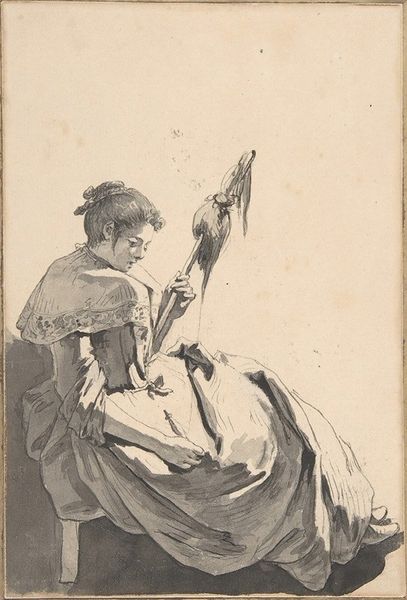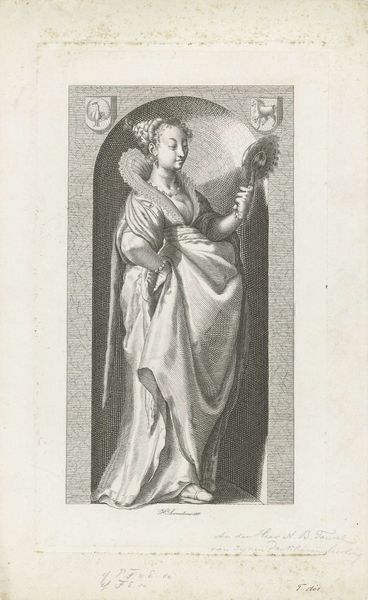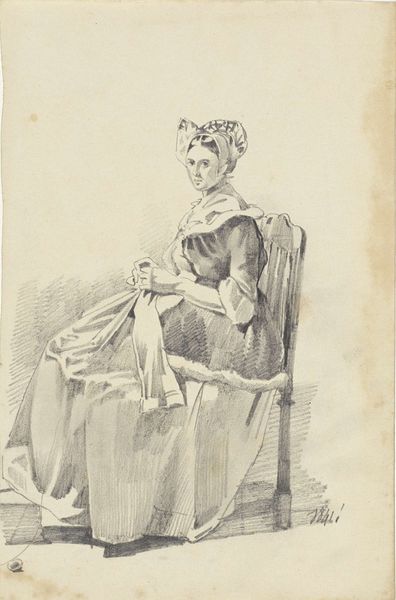
drawing, charcoal
#
portrait
#
drawing
#
charcoal drawing
#
figuration
#
romanticism
#
charcoal
#
charcoal
Copyright: Public Domain: Artvee
Editor: Pierre-Paul Prud'hon's "Two Women," a charcoal drawing from around the 19th century, offers a rather haunting, almost ghostly depiction. It's quite different from the vibrant colors of many contemporary works. What historical forces were at play that shaped the creation and the reception of such a piece? Curator: That’s a perceptive reaction. Prud'hon worked during a period of significant social and political upheaval – the French Revolution, the rise and fall of Napoleon, and the subsequent restoration. Do you notice anything in the subjects’ attire, or in their positioning relative to one another, that speaks to you? Editor: They are both wearing what appear to be neo-classical dresses, simple in appearance. And the standing figure seems to be looking down at the seated figure. Perhaps a higher and lower status? Curator: Exactly. The simple dresses signal a departure from the opulence of the ancien régime. Romanticism, reacting against the Enlightenment, embraced emotionality and individualism, and Prud'hon here is perhaps suggesting a dialogue, not just between individuals, but between societal values old and new. How do you think its exhibition context would further reinforce these considerations? Editor: Interesting... so its location and audience would actively change our reading of the artwork and its possible relationship between the women depicted. Thinking about the revolutions and political events adds layers to the work, beyond its artistic technique. Curator: Precisely! By understanding these contextual forces, we are equipped to have an informed appreciation of "Two Women."
Comments
No comments
Be the first to comment and join the conversation on the ultimate creative platform.
